实现幻灯片ppt格式的统一
在PPT演示文稿中要对内容进行统一的格式、背景等设置是非常麻烦的,这时我们可以利用【视图】| 【母版】,来进行快速的格式、背景等设置。
“幻灯片母版”用来控制幻灯片上输入的标题和文本的格式与类型,同步更改所有幻灯片的文本及对象。如果要修改多张幻灯片的外观,不必一张张幻灯片进行修改,而只需在幻灯片母版上做一次修改即可。PowerPoint 将自动更新已有的幻灯片,并对以后新添加的幻灯片应用这些更改。
接下来通过截图的形式说明一下操作方法。
1、首先利用“母版”功能来快速的对字体、字号、文字颜色进行设置:
打开【视图】| 【母版】中的【幻灯片母版】。
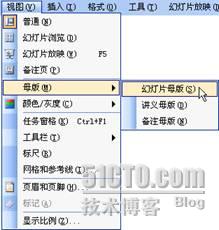
点击【单击此处编辑母版标题样式】,进行字号字体及颜色设置。
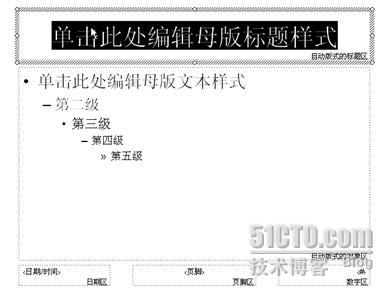
在文本占位符中第一级别标题点击 【单击此处编辑母版文本样式】,进行第一级别样式编辑。
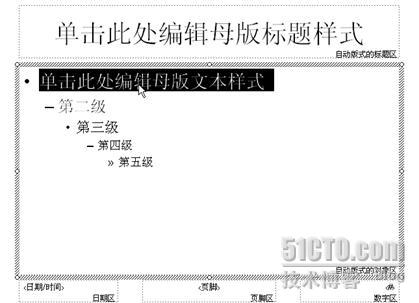
第二、三、四等级别同第一级别编辑方法。
单击母版中正文文本占位符边框,选择【格式】|【项目符号和编号】可以对项目符号和编号进行选取。
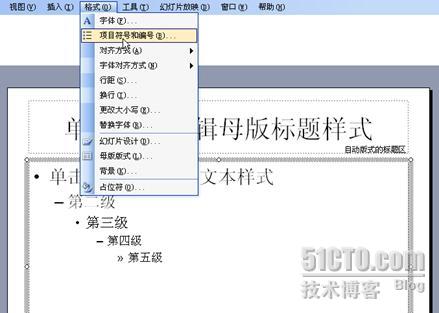
单击【母版】工具栏中的【关闭母版视图】,可以看到幻灯片中的内容已经按照“母版”中的设置进行更改。
2、利用“母版”为每张幻灯片添加统一的LOGO及文字:
在【视图】菜单中选择【母版】|【幻灯片母版】
选择【插入】菜单中【图片】|【来自文件】,查找到LOGO图片后插入母版当中,并移动到所要摆放位置。
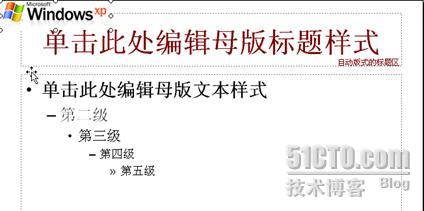
选择【插入】菜单中【图片】|【艺术字】,选择一种艺术字样式,点击【确定】后输入文字,并设置好字体、字号点击【确定】。在“母版”中将插入的艺术字移动到所要摆放位置。

单击【关闭母版视图】查看效果。
3、利用母版来统一幻灯片的背景:
打开“母版”试图,单击【格式】菜单中的【背景】,选择【背景】中的【填充效果】。在【填充效果】中选择【图片】工具栏,选择所要设置成为背景的图片,单击【确定】退出。这样每张幻灯片都与“母版”中的设置相同。

4、利用“母版”对“标题幻灯片版式”的幻灯片进行不同设置:
打开“母版”视图,单击【插入】菜单中的【新标题母版】。
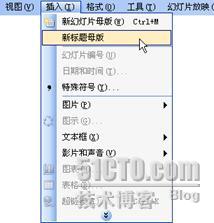
可以看到在“母版”视图中出现一个新的母版,新母版与原来的母版格式相同,但是新母版为“标题幻灯片母版”。
“标题幻灯片母版”设置方法与“幻灯片母版”设置相同。

这样在演示文稿文档中采用标题版式的幻灯片就采用了“标题母版”的样式,采用标题和文本版式的幻灯片就采用了“标题和幻灯片母版”的样式。
在最新的Office 2007中,你可以在“视图”选项卡下找到“幻灯片母板”按钮,其“幻灯片母板”功能的使用方法与以上Office 2003中的过程是基本一样的。另外,Office 2007中引入了“主题”这样一个新概念,可以快速统一整个文档的颜色风格、文字字体和图形效果,这也是实现幻灯片格式统一的一个好方法
第二篇:format of a research paper introduction论文的标准格式
Writing a Research Paper Introduction – A step-by-step reference
The introduction is the first chapter of a research paper. It starts from the research proposal stage, but it is critical to understand the difference between the introduction of a research proposal and that of a research paper. At the proposal stage, the introduction is presented in a future tense expressing the intensions and expectations of the researcher, whereas that of the research paper is in the past tense, revealing what actually happened.
A research paper Introduction plays an essential role of preparing the reader’s mind to follow the paper as it unveils the problem, the researcher’s intervention, intentions and expectations.
Sections of a research paper introduction
The introduction constituents and sequence majorly depend on the type of research and format undertaken.
- Background: Reveals an identified and well defined problem, exploring its history and nature with reference to the existing literature. It should indicate the root of the problem, its extent, the affected, previous investigations, etc.; highlighting the research paper introduction in general, and ensuring proper perception of the situation at hand.
- Statement of the problem: Is the core of the issue/problem and must be clearly defined. It states exactly what the problem is, justifying that the study narrows or bridges the gap between what it is and what it ought to be.
- Purpose of the study: Is derived from the statement of the problem. It states why one decides to study the problem and the role of his/her research to solve the problem.
- Objectives of the study: These constitute the targets a researcher intends to achieve. They act as a yardstick for the research exercise and must be specific, measurable and achievable.
- Research questions: These are research guiding questions generated from objectives. The researcher needs to answer them as part of the investigation.
- Hypotheses: These are guiding predictions of the outcome of the study. Basing on research questions, an assumption derived form existing theories, personal observations and experience is made. A hypothesis provides a tentative answer to the problem, allowing for further investigations. Hypotheses are common for descriptive and explanatory research.
- Scope of the study: Is expressed in terms of a geographical area, say village, town or city; and in terms of content – showing the extent of knowledge coverage.
- Significance of the study: Shows how meaningful and useful the research is; as well as indicating the beneficiary group(s).
- Assumption: Situations under which the research is may not be exact, so for easy of work the researcher may assume what he/she has exactly considered in his/her investigation.
- Delimitations: These are advantageous factors affecting one’s research exercise.
- Limitations: These are disadvantageous factors affecting one’s research exercise.
- Definition of key concepts/terms: Due to ambiguity and varying meanings of words/terms/concepts, the researcher needs to be precise giving exact meaning of what he/she intends to communicate.
- Abbreviation: Abbreviations may be misunderstood, so clear full meanings avoid confusion.
How to Write a Research Proposal – A successful and winning approach
15 November, 2009
Research exercises are first planned in research proposals. It determines the research direction, its endurance or failure. A proposal serves as an action plan for research, constituting three chapters; Introduction, Literature review and Methodologies. It is complemented with references, budget and timetable. Students obliged to do research submit research proposals to their supervisors before real research exercises. Supervisors approve the proposals for research exercises to commence. Learning how to write a research proposal is key for research students.
A research proposal is presented in a future tense, signifying the target research accomplishments and operation mode. Before doing a custom research paper or term paper writing, planning is a key role.
How to write a research proposal in a simpler way
Understand the intended topic, your knowledge about the subject, your audience’s interests and their knowledge about the subject. Understand the type of research resources and sources required. If you understand how to write a research proposal, then your research exercise becomes easier. Your essay writing tactics, highly aid your writing skills for a proposal.
? Chapter one (Introduction):- this expresses the intensions and expectations of the researcher and plays an essential role of preparing the reader’s mind as it reveals the problem, researcher’s intentions, why he/she intends to intervene and his/her expectations.
The introduction contains;
1. background of the study,
2. statement of the problem,
3. purpose of the study,
4. objectives of the study,
5. research questions and/or
6. hypotheses,
7. scope of the study,
8. significance of the study,
9. assumption,
10. delimitations,
11. limitations and
12. definition of key concepts/terms
? Chapter two (Review of relevant literature):- When reviewing literature examine the sources related to the topic of interest. Avoid the literature that is not connected to the area of study. Always paraphrase and cite basing on your objectives and hypotheses. Ensure that the review saves you the burden of repeating completed research, wasting time on failed research and helping you find what the previous researchers have not tackled.
Literature review constitutes;
1. Literature map: identify the variables and specify the necessary resources, embarking on previous and similar interest researchers.
2. Justification of intended research: show why the research is necessary.
3. Extent and constraints of previous researchers: what does the researcher need to cover? Note limitations of previous researchers.
? Chapter three (Methodologies):- The researcher analyses methods to be used, depending on the type and accuracy of data required.
The methodologies constitute the following;
1. Research design: gives the necessary type of research. Involving qualitative and quantitative descriptive studies.
2. Sampling: the researcher chooses ways to undertake for study samples. Sampling methods may be random, stratified, and purposive and so on.
3. Tools and instruments: data collect tools involve questionnaires, interviews; focus discussion groups and so on.
4. Procedure: shows how data collection will be administered.
5. Data collection: identify the primary and secondary sources.
6. Data processing and analysis: focus on raw data, sorting, editing, coding and representing it.
How to write a research proposal takes various undertakings from institution to institution. You can further your guidance using research paper samples.
Methodology Writing for your Research Paper
2 December, 2009
Before you carry out your research, you have to analyze the rationale and feasibility of particular methods for a given study. This is normally written in your research proposal, while the explanation for the methods undertaken is written in the research paper methodology. Different kinds of issues require different forms of approach during data collection and processing with in a given research exercise. These are exactly what the researcher handles in his/her methodology writing.
While analyzing the methods to employ during the study, you need to;
- Seek for relevant methods to handle the thesis or argument in your research paper or term paper.
- Carry out adequate tests for the feasibility of the method of your choice.
- Accurately establish the results level your selected method can attain.
- Ensure that the findings acquired by your selected methods can generalize situations beyond your immediate organization.
Always remember that the choice of your methodology will highly depend on the purpose of the research and the type of problem under study. The methodology in your proposal is only a suggestion and is written in a future tense, whereas that in your research paper is in past tense revealing how you actually administered your study methodically.
The Structure of your Methodology Writing
The methodology constitutes a number of areas covering how you are going to carry out your research exercise. It gives a layout of the specific methods to handle particular situations. The methodology can be outlined as follows:
- Research design: This may be qualitative and descriptive in which the quality of a situation is studied or analyzed and described accordingly. It may also be quantitative, where the results are numerical in nature.
- Sampling: Samples may be used as a representation of a large population. A sample can be non-probability or probability sampling. These also have a number of subcategories.
- Tools and Instruments: These are used to establish the facts from respondents. They may include questionnaires, interviews, observations, recording, focused group discussions, tests and diary.
- Procedure: This reveals the stages to be undertaken while carrying out your research exercise. You need to be systematic in a way following the terms of reference, administering the research exercise, and revealing how the recommendation letter was obtained. This gives the whole plan of the research exercise procedures exhaustively.
- Data collection: Identify the primary and secondary data sources as anticipated. Mention your data sources as may be applied while undertaking the research. Show how you intend to acquire and store data.
- Data processing and analysis: You have to reveal how you are supposed to sort, edit, code and represent your data. Then show how the represented data shall be interpreted. Descriptive methods are necessary for the interpretation, comparison and drawing conclusions.
Your methodology will largely depend on the requirements of a given format or will largely depend on the various institutions styles. At this stage of your research proposal you are meant to exhaust the appropriate methods for your research. Try further reading through essay help and various research paper samples.
